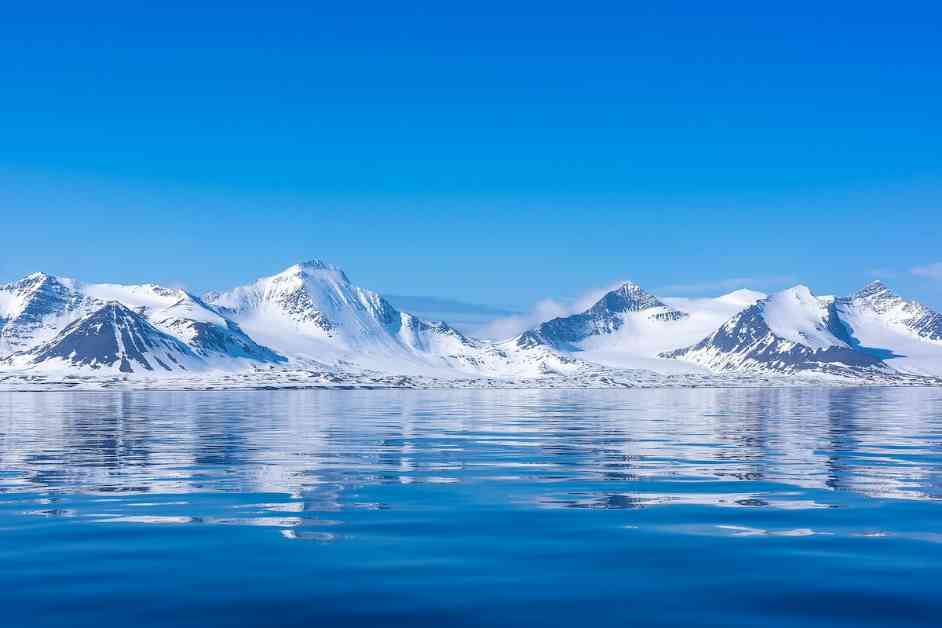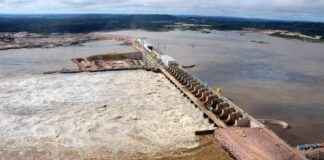Unprecedented Arctic Temperature Surge Raises Alarm Bells
The Arctic region, known for its extreme cold and pristine landscapes, was recently thrust into the spotlight when temperatures spiked to 20 degrees Celsius above the average recorded between 1991 and 2020. This unusual event, which occurred in the North Pole, stunned scientists and observers alike, marking a significant departure from the seasonal norms in the region.
A Shift in Climate Patterns
In a surprising turn of events, the North Pole witnessed a sudden surge in temperatures, pushing them beyond the freezing point. With one reading measuring the temperature at 0.5 degrees Celsius, and the EU Copernicus Climate Change Service detecting temperatures above -1 degree Celsius as far north as the 87th parallel in the Arctic, the scale of this anomaly became starkly evident.
Experts Weigh In
Renowned climate scientist Mika Rantanen, from the Finnish Meteorological Institute, described this event as a “very extreme winter warming.” While not unprecedented, it certainly bordered on the upper limits of what can occur in the Arctic. Rantanen emphasized the challenges of accurately measuring the temperature differences in such remote locations, hinting at the complexities of studying climate patterns in this unique region.
The Science Behind the Surge
The root cause of this temperature surge lies in a complex interplay of atmospheric and oceanic factors. Julien Nicolas, a scientist at the EU Copernicus Climate Change Service, highlighted the role of warmer air being drawn towards the North Pole due to a low-pressure system over Iceland and rising ocean temperatures in the Atlantic. These climatic shifts have disrupted the delicate balance of the Arctic environment, leading to unprecedented temperature spikes.
Arctic Amplification: A Growing Concern
A seminal study conducted by Rantanen and colleagues in 2022 revealed a troubling trend known as Arctic amplification. This phenomenon, characterized by the Arctic warming at a rate up to four times faster than the global average, poses significant challenges for the region. Some areas within the Arctic are experiencing warming up to seven times faster than the rest of the world, underscoring the urgency of addressing climate change in this critical ecosystem.
Implications for the Future
The escalating temperatures in the Arctic have raised red flags among scientists, who fear the repercussions of ice melt, rising sea levels, and increased emissions. The National Snow and Ice Data Center reports a steady decline in Arctic sea ice, shrinking at a rate of 13% per decade since 1979. Additionally, a 2023 study co-authored by climate scientist Dirk Notz predicts that the Arctic could witness ice-free summers by the 2030s, even under low emissions scenarios.
A Call to Action
As the Arctic faces a pivotal moment in its environmental history, the need for urgent action to mitigate climate change has never been more apparent. Dirk Notz, in a sobering statement to The Guardian, emphasized the irreversible nature of the changes unfolding in the region. With the Arctic Ocean on track to lose its sea ice cover in summer within the next two decades, the time to address human-induced climate impacts is now.
A Global Challenge
The challenges confronting the Arctic are not isolated to this region alone. Similar trends have been observed in the Antarctic, where ice levels have plummeted to alarming lows, accompanied by a heatwave that saw temperatures soar over 10 degrees Celsius above average. These parallel developments underscore the interconnected nature of climate change and the urgent need for coordinated, global efforts to combat its far-reaching effects.
In conclusion, the recent temperature surge in the Arctic serves as a stark reminder of the fragility of our planet’s ecosystems in the face of climate change. As scientists continue to monitor these developments, it is imperative that we heed their warnings and take decisive action to safeguard the Arctic and its invaluable resources for future generations.














